Tenmoku, as a representative of black porcelain, is one of the eight famous porcelain of the Song Dynasty in China and was a tea set used by the Song imperial court. It is named Tenmoku because it was produced in Jianning County, Jianning Prefecture, during the Song Dynasty, and Jianning County was an affiliated county of Jian'an, hence the name "Tenmoku".
"Very dark, strange patterns, and the bottom of the cup is very rough." This is many people's first impression of Tenmoku.
Tenmoku is all made using regular firing, so the glaze layer on the rim is relatively thin, while the glaze on the bottom of the cup is thicker. The outer wall often applies half glaze to avoid sticking to the kiln bottom during firing. Due to the flow of glaze at high temperatures, there is a phenomenon of hanging glaze, commonly known as "glaze tears" or "glaze droplets." This is one of the characteristics of Tenmoku.
Tenmoku commonly features different glaze styles, such as "oil droplets," "rabbit fur," and "partridge spots." The glaze of oil droplets is mostly irregular crystals with clear boundaries along the edge. The valuable ones have oil droplet patterns covering the bottom of the cup. Rabbit fur is mostly silky, radially-shaped crystals. Emperor Huizong of Song mentioned in his "Treatise on Tea" that "the color of Tenmoku should be blue-black, and those with jade hair-like lines are the best." Partridge spots have a changing pattern between rabbit fur and oil droplets, with adhesion at the edge of the crystals. Occasionally, the pattern appears with a faint rainbow color, which is extremely rare.
Tenmoku became the most popular teacup during the Song dynasty when tea appreciation and Tea Fight were prevalent, and the decisive factor was its glaze color. If the glaze pattern of Tenmoku were easy to control, imitate, and uniform, it would not have led the trend during the Song dynasty.
The wonder of Jianyao's black glazed porcelain lies in the fact that while the patterns of other porcelain may also appear stunning, they are all the result of skilled craftsmanship. While Tenmoku also requires the skill of craftsmen, its patterns are all formed naturally during the pottery-making process. Black glaze is fully utilized in the kiln fire, producing "unobtainable" patterns that are ever-changing and colorful, with no two identical pieces. This is what makes Tenmoku stand out among black-glazed ceramics and what gives Jianyao an indelible achievement in the history of ceramics.

Understanding Tenmoku is not difficult.
- Whether you visit a Tenmoku tasting store or appreciate a Tenmoku online, the first step is to observe the Tenmoku from a distance. Is the shape of the cup well-proportioned? Does the overall design match your aesthetic preferences?
- Examine the Tenmoku up close (or in pictures) and look for any obvious flaws. Ask if the cup is made of iron tires and natural mineral glaze, and if the patterns are to your liking. (They are roughly divided into five categories: Wu Jin glaze, rabbit fur, oil droplets or partridge spots, changing patterns, and mixed glaze.)
-
Carefully examine the details of the Tenmoku, including the details of the trimming, the distribution of the patterns, and the effect of the patterns. Regarding the effect of the patterns, for the commonly seen rabbit fur and oil droplets, "rabbit fur patterns should have a sense of hierarchy, and the best ones are those that extend from the rim to the bottom of the cup. Moreover, rabbit fur patterns that are not too dense or sparse and have a three-dimensional effect are the best. For oil droplet cups, the best ones have clear and visible oil droplet patterns of varying sizes, with evenly distributed and full spots both inside and outside the cup." By the way, first make sure that the pattern distribution matches your aesthetic preferences. Then, check whether the pattern or iridescence effect of this cup has any special features, and of course, the rarer the better. If possible, use a magnifying glass or a microscope to appreciate the patterns.

After the above three steps, we have determined that this cup is in line with our aesthetic preferences in terms of its shape, pattern, and iridescence effect, and if the price is reasonable, we can take it home! Then, during the subsequent use, we can carefully experience the changes in the tea water in the Tenmoku and the daily changes of the Tenmoku itself.
After playing with Tenmoku for a long time, you will discover the beauty of black glaze, which not only has black, but also other glaze colors and crystal textures derived from black glaze. This shows the extraordinary beauty of "Tenmoku black," which is "colorful and born from black." With black as the base tone, it presents a variety of iridescences, such as changing patterns like the sky eye, partridge feather-like patterns, stars, mountains, and snowflakes, as well as the way of yin and yang, birds and flowers, autumn rain and yellow flowers, Wu Jin-like mirror, stars, the same brilliance as the sun and moon, starlight, blue lotus flower, thousands of lotus, feather scales, night rain, and autumn crops, fully displaying the poetic beauty of "the light and dust of all things in the universe born from one thought." This is the "reflection of the object, reflecting the human heart; the elegance of playthings, avoiding vulgarity."


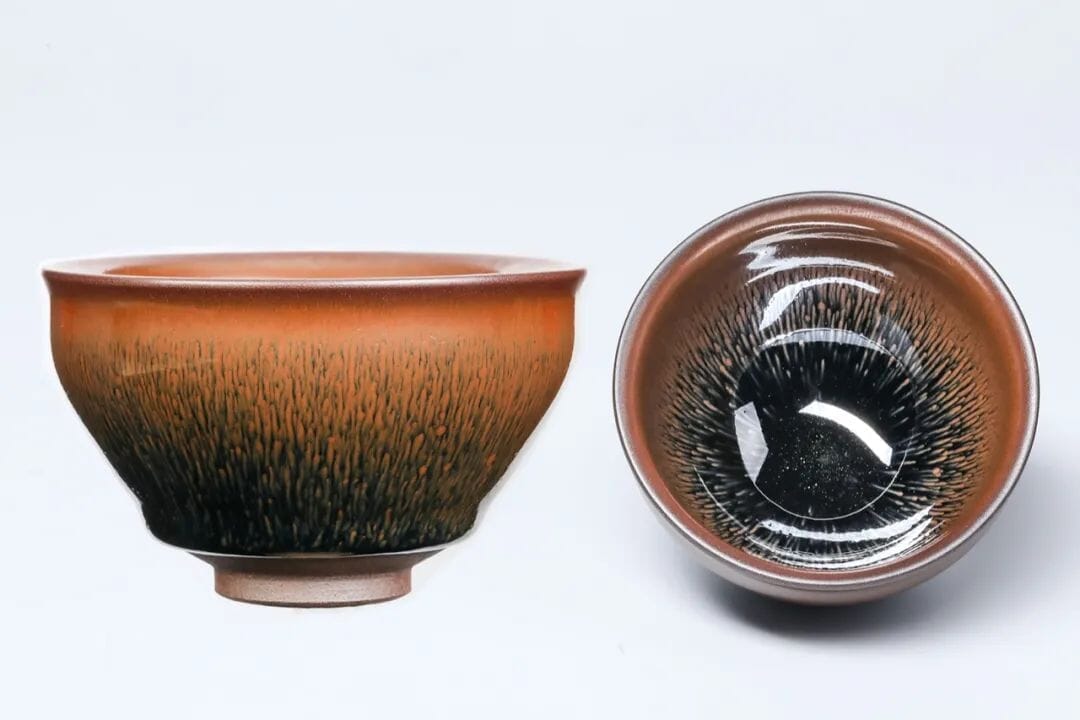
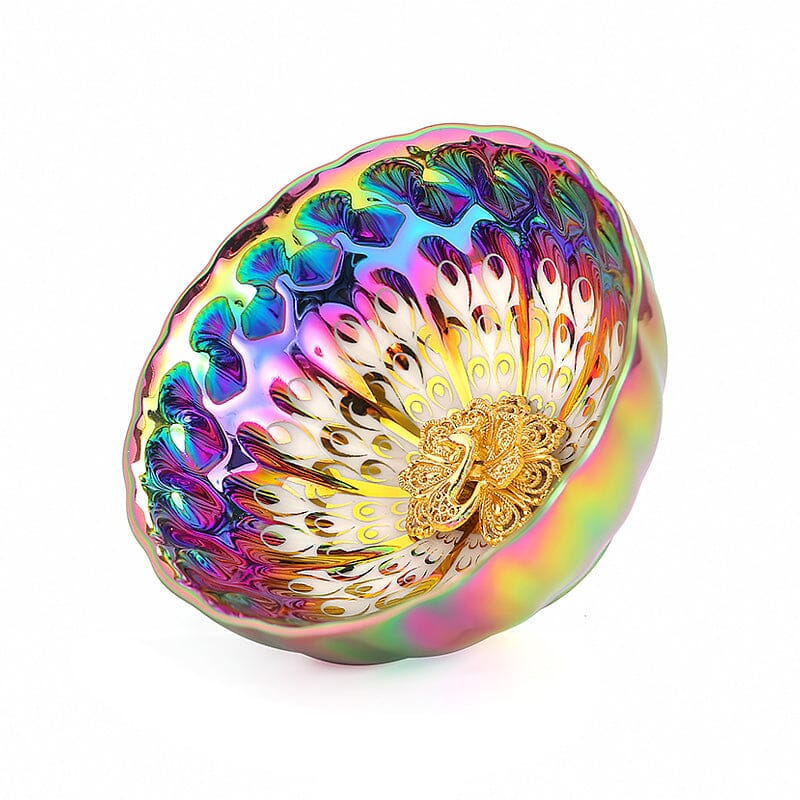
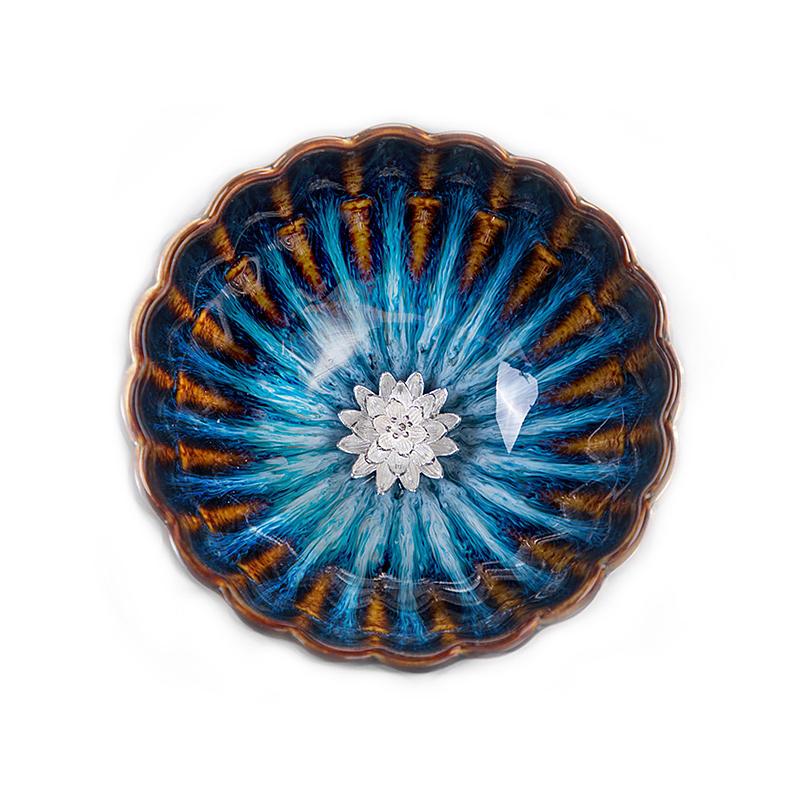
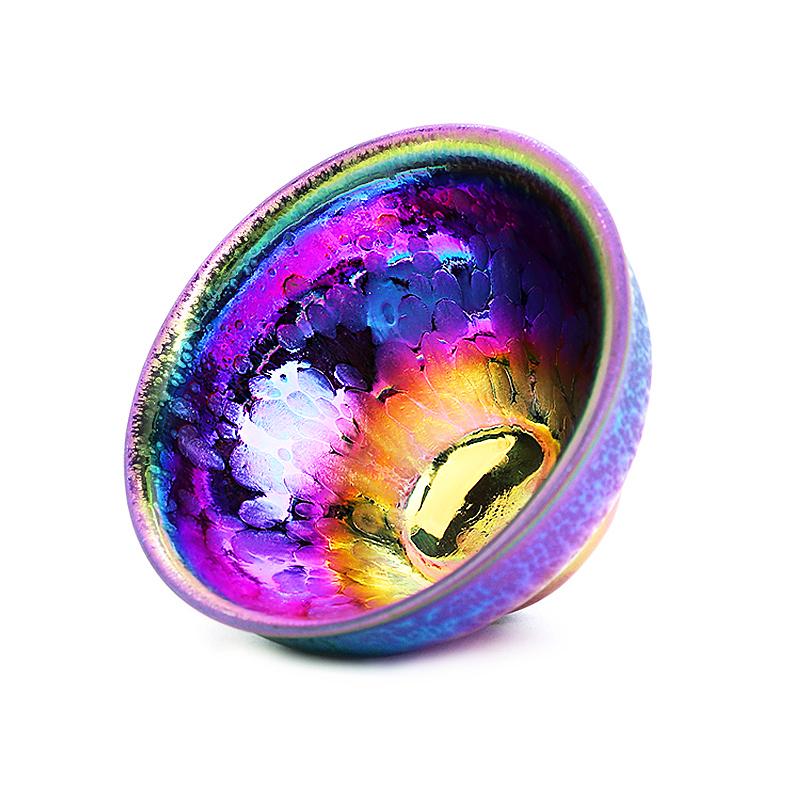
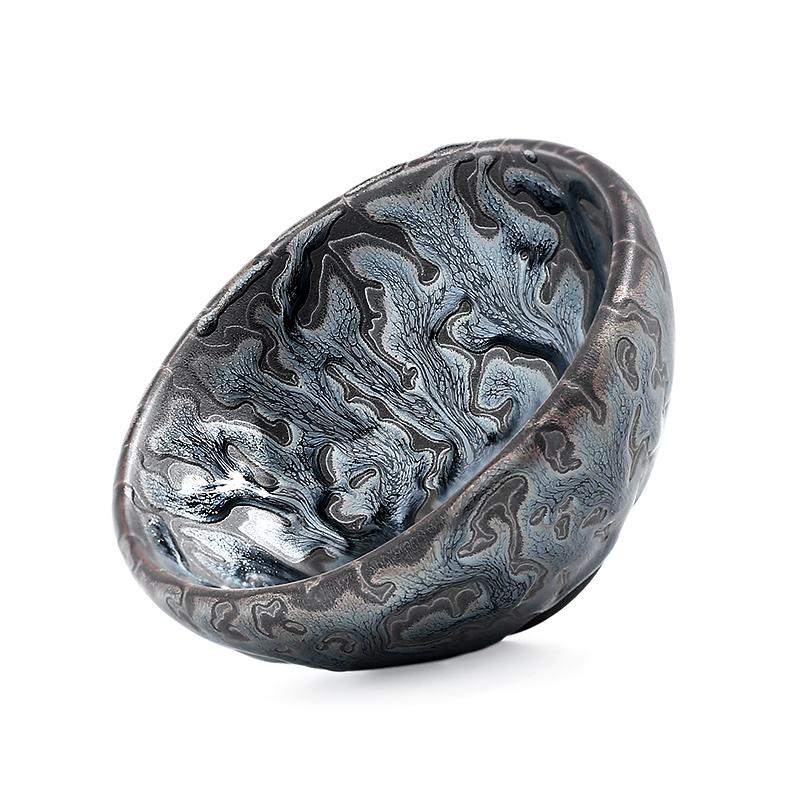
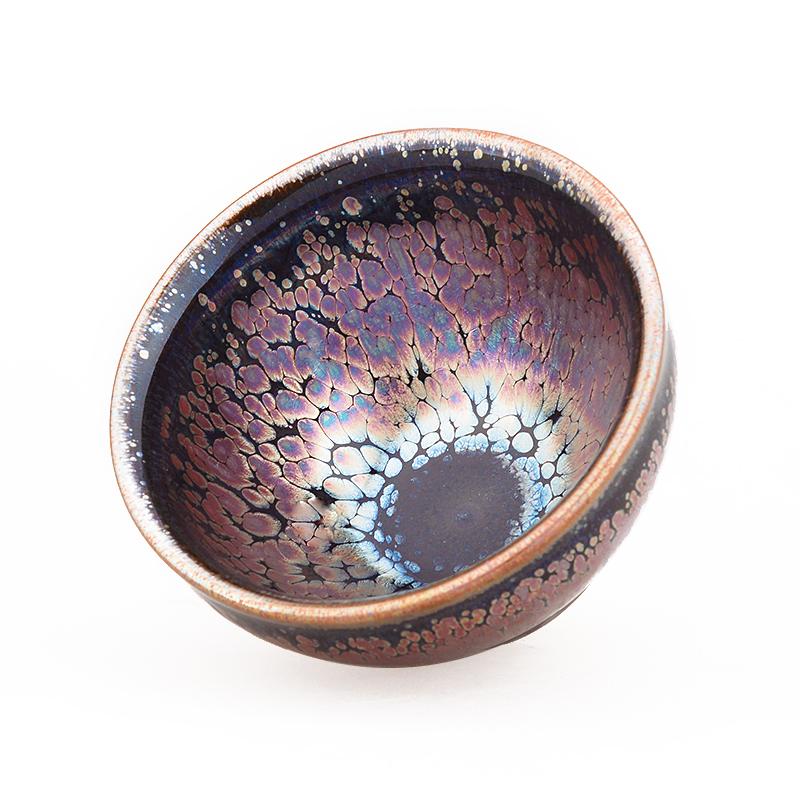
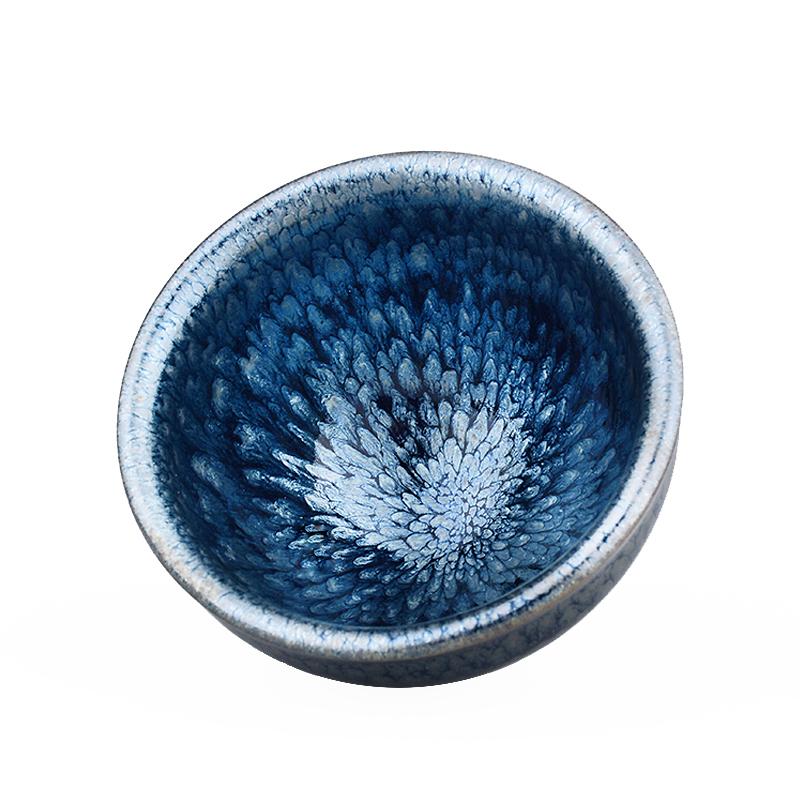
Share:
New Tenmoku's "Earthy Smell": Causes and Solutions.
Tenmoku Wood Firing Chronicles of Yuyao and Longyao - Meeting on Tea Table.